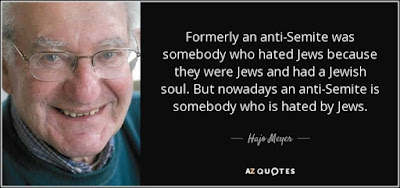EEN MAINSTREAM PAPEGAAI

When it comes to Syria, our press is full of moralizing and propaganda, and short on analysis
Last week The New York Times ran a big piece on Syria titled, “As Atrocities Mount in Syria, Justice Seems Out of
Reach.” It asserts that Bashar al-Assad
is responsible for 100s of 1000s of deaths of civilians, and that the
evidence of his crimes is as strong as that at Nuremberg for Nazis.
Donald
Johnson plaatst daar zijn kanttekeningen bij en verwijt The New York Times vooringenomenheid en zich zonder enig nader
onderzoek te conformeren aan de ‘gangbare’ meningen. Na alle “feiten” gewogen
te hebben concludeert hij dat niemand precies weet wie alle gruweldaden heeft
begaan en dat het meest voor de hand liggend is dat alle strijdende partijen even verantwoordelijk zijn.
Bovendien
zouden de Verenigde Staten zich verre van deze wandaden houden volgens The New York Times: The U.S. “holds itself at arm’s length”.
Omdat ik
mijn ogen niet kon geloven toen ik dit las heb ik de betekenis van ‘holding at
arm’s length’ nog eens op gezocht. (to avoid becoming connected
with someone or something)
Johnson maakt korte metten met deze opmerking.
In het
tweede gedeelte van het stuk maakt hij een vergelijking tussen Syrië en Israël
waaruit de dubbele standaard van deze “kwaliteitskrant” blijkt.
In dit bericht staat het tweede gedeelte:
Getting back to the New York Times piece with which I began: Yes, Assad is a war criminal. And it seems unlikely
that he will face justice.
But who exactly are Americans to be talking about justice? We helped
keep the war going for years and yet we act like nothing that has happened is
in any way our fault, except that we should have bombed more. And none of
the American moralists seem to care about what we are helping the Saudis do in
Yemen or what we did to Libya after another of our noble humanitarian
interventions.
The word justice is not something we should be talking very loudly about.
But we do it anyway: because we have the power to squash people like bugs and
we are not held to account for it.
I am going to finish by making three comparisons of Syria to Israel and
Gaza. The comparisons have nothing to do with which side you think is
right or wrong–they are just a way of illustrating how mainstream Americans
tend to think about these conflicts, as expressed in the press.
Consider that phrase “the largest violations by far” have been committed by
the Syrian government. In the Second Intifada “most” of the civilians
killed were Palestinians killed by the Israelis. “Most” in that case meant over
2000 Palestinian civilians vs roughly 750 Israeli civilians, or approximately
75 percent Palestinian, according to the Israeli human rights group B’Tselem.
But of course in American coverage, the Israeli civilian deaths loomed very
large, because of the U.S. moralism against the Palestinians. The minority
became the majority in terms of coverage. A genuinely balanced news
organization would have given a lot of coverage to both sides. And today in
Syria, the moralism assures that there is no balance re deaths on the Assad
side.
Next, consider Gaza 2014. The civilian death toll was around 1400 for the
Palestinians and 6 for the Israelis– figures from
B’Tselem. That’s a roughly 200 to 1 ratio. In the Second Intifada you could say
both sides were traumatized. In Gaza 2014 it was a one sided massacre.
Was it covered that way in the NY Times? Of course not. They leaned over
backwards to tell the Israeli side. Even though the Syria criterion — “Most of
the civilian deaths” — would have meant focusing solely on Israel as the
perpetrator.
My third example is imaginary. Suppose that countries X, Y, and Z gave
billions of dollars of weapons to Hamas, and simultaneously in some fashion
thousands of ISIS fighters managed to sneak through Jordan into the West Bank
and capture some Palestinian towns. The Israelis violently suppressed some
nonviolent Palestinian demonstrations and as a result a war began. That war drags
on for five years. Tens of thousands of Israeli soldiers die, because the
weapons supplied to the rebels are very effective. Many thousands of
Israeli civilians die in rocket barrages and other attacks. ISIS turns out to
be so powerful the U.S. bombs them to prevent Israel from
toppling. The U.S. also decides to bomb Alepp–I mean, Gaza.
So ask yourself the following questions:
1. How would Israeli warplanes treat the West Bank and Gaza
under these conditions? (Hint–how did they treat Gaza under vastly less
serious circumstances in real life?)
2. How would Israeli soldiers treat Palestinian civilians?
3. How would Israel treat its own citizens suspected of sympathy for
its enemies?
4. And given that “the largest number of violations by far” would be
committed by the Israelis under these extreme conditions, how would the New
York Times cover the conflict? Would they focus almost exclusively on
Israeli crimes? Would they rely almost entirely on Palestinians who want to
topple the Israeli government as their sources? And would they say that
countries X, Y, and Z had kept the conflict at arm’s length, because all they had done was supply
billions of dollars of weapons to Palestinians who were then able to keep the
war going for five years and nearly topple the government, to the point where
the U.S. had to intervene? For that matter, how would Israel react to countries
X, Y, and Z? Would the New York Times support that reaction by Israel?
Of course my scenario belongs to some parallel universe, but it does
illustrate the sort of bias that permeates the American press because it
describes the Syrian War with the names of the factions changed. Same
relative death tolls. Same brutality. But different names.
And in that case as we all know, the U.S. and The New York Times
would be completely on the “Assad” side: Israel.
It shouldn’t matter which side you favor in the real Syrian war or the
Palestinian conflict so far as the news coverage is concerned. What one
wants from a news organization is fair reporting of what is actually occurring;
and if we can’t know for sure, then state that as well. We don’t get
this. We get a mixture of facts and moralizing and propaganda from people
who actually seem to think you can pump billions of dollars into arming rebels
and not be partly responsible for what happens.

